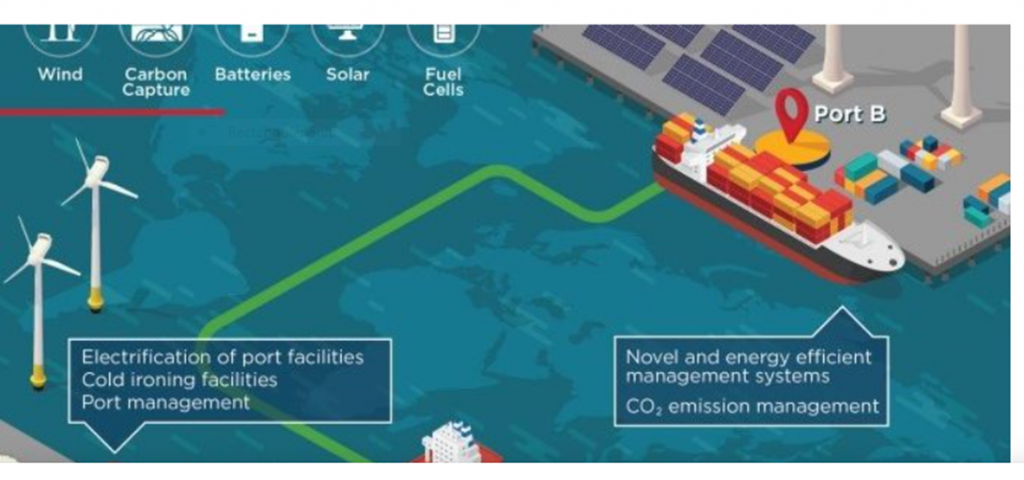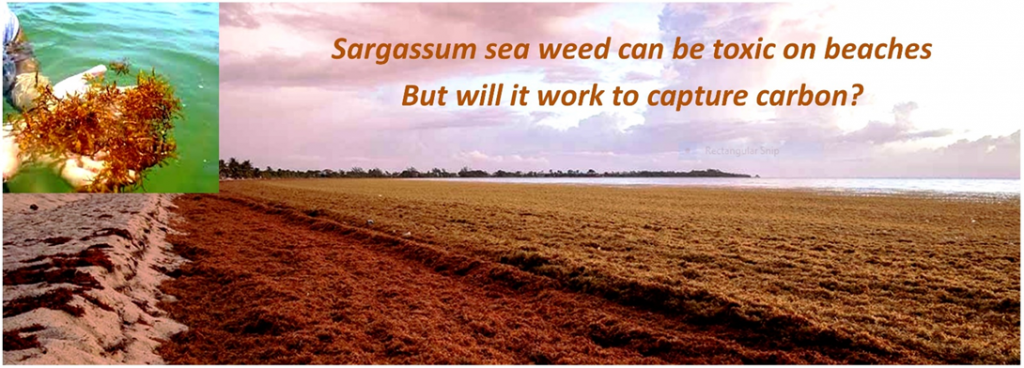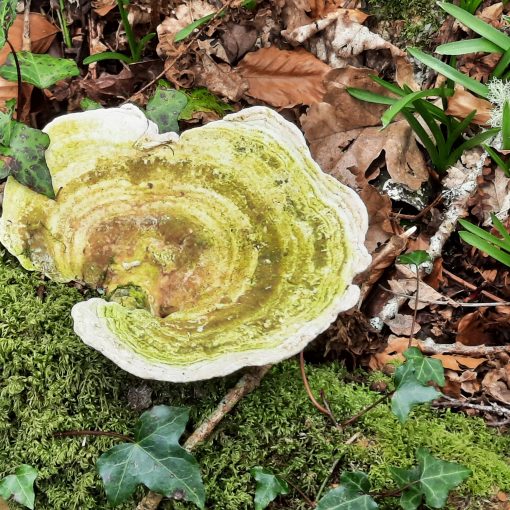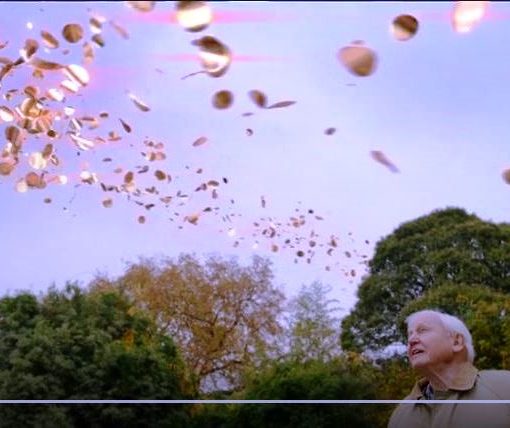14th OCTOBER 2022 There’s a salty tang in the air!
E-boats, sails, fishing nets + a mega seaweed farm, to capture 1 billion tons of CO2 p.a.
(this brought on a wave of nostalgia for a magical dance event many years since, at Trebah Gardens – my son on the left)

The Title Was
TAKE THE PLUNGE,
THE WATER’S LOVELY
TASTE THE WINE
AND THE SALTY BUBBLY!
Matters arising from last time
One reader, who has a collection of classic cars (bet you didn’t know all the collective nouns to use for cars? – horde, fleet, stack, line and mayhem!!) responded to last week’s cars feature with the comment ‘it wasn’t complete, because you left out plug-in hybrids.’ He was, of course, totally right. My own impression of the plug-in option is that it would not appeal to many of us. The reviews seem to suggest it works to assuage the conscience of big business, when supplied as a company car, but the gain from plugging into a 3 pin plug at home in order to make about a 30 mile range on electric doesn’t seem worthwhile. What we really need here is an owner who will give us their feedback. Can you suggest anyone I could approach?
The other update is re our idea for a Big Green Adventure, a day out leaving the car at home. All of our Hearts of Green members will be offered this free; for non-members, we are thinking how to price! So far, we have around 12 people expressing interest to take part in the trial, so that is very good news. The biggest worry is that we will fix it all up and then there will be a new bus strike!


Electrification of boat engines
The history of this process goes way further back than one might imagine. Moritz Hermann von Jacobi, a Prussian inventor working in Königsberg, developed an early electric motor in May 1834, and first of all worked on electric cars. Jacobi was invited by Tsar Nicholas I in 1836 to further his developments at the Imperial Academy of Sciences in St. Petersburg. With the tsar’s financial backing, Jacobi installed an improved version of his electric motor in a 28-foot paddle boat, which made its first trip across the Neva River, carrying 14 passengers, in September 1838.
Commercial boats
Batteries were the major challenge (this is still the case!). At first zinc batteries were used, weighing more than 180 kg, which enabled a speed of approximately 2.5 km per hour. The zinc batteries were also difficult to recharge. French physicist Gaston Planté invented a lead-acid, wet cell, storage battery in 1859 – the first commercial rechargeable electric battery. This was followed in 1866, by George Lechlancé inventing a dry cell battery of zinc, manganese, and ammonium chloride. With these more efficient batteries, outboard motor designs (like those invented by William Woodnut Griscom of Philadelphia in 1879 and Gustav Trouvé in 1880), enabled the commercial operation of electric boats.
By 1882, the Electrical Power Storage Company had produced a fleet of commercial river launches for use on the Thames, with a first boat called Electricity! It ran for approximately six hours at an average of 13 km per hour. In 1887 charging stations for boats were installed along the riversides, followed a year later by additional floating stations. In 1905, the 95 foot Victory was launched – the largest electric boat to be in service on the Thames.
Submarines
While the earliest submarines were mechanically powered, the first mass produced military submarines used electric motors while submerged. An Irish engineer called John Holland spent decades working on submarine designs and improvements, leading to construction of his ground-breaking Holland VI in 1897. Soon after, large-scale production was begun by The Electric Boat Company.
Large Commercial
Viability for today’s markets is improving all the time, through technical innovations (often of a hybrid nature) aided by better batteries, at lower prices. Check out https://safety4sea.com

Large pleasure craft e.g. super yachts
One country that is ahead of the game, in all types of E-boats, is Norway. By 2026 they will ban old-style polluting boats in the fjords. They are testing all kinds of E options:-
The operators of the first all-electric ferry in Norway, the ‘Ampere’, reported some impressive statistics after operating the ship for over two years. They claim that the all-electric ferry cuts emissions by 95% and costs by 80%. Many more ferries have gone electric and more are being ordered.
But electric ‘Power trains’ are also making their way in other kinds of boats. We recently reported on a new plug-in hybrid cruise ship sailing for the Arctic. Now we are seeing a similar system deployed in a mega yacht – more specifically a Wider 165 mega yacht:-

Smaller pleasure craft
Duffy Electric Boat Company of California began mass producing small electric craft in 1968 and has produced more than 10,000 boats to date. Boats powered by solar panels emerged in the 1980s and are a popular choice for electric boating today. The Tûranor PlanetSolar is currently the largest solar-powered boat in the world at 31 meters, and in 2010, it became the first solar-powered electric boat to circum-navigate the world.
A personal story
How does it feel to have converted your previously diesel-driven small craft to electric? My neighbour Bob has summed up the great pleasure to be had in switching from a noisy, smelly 2 stroke engine of the past to a new WW (water world) electric motor. He can glide in a very peaceful – if slightly hypnotic – world, of ticking and slapping waves on the wood, as he uses 1.2 kw of power (through the original prop) to cruise at c. 4 knots.

If you are interested to D.I.Y. I am sure Bob would be a great person to approach. Start by finding his page Cornwall Electric Boat, on Facebook, or view the film here https://www.youtube.com/watch?v=fftjcFwcZfA.
Recycling Sails and Fishing Nets
A couple of weeks back I was exploring all options for new banners and displays around the site here, which brought me around to calling a few recently established firms for collecting and re-purposing old sails. Although we have used old sails in the past, I don’t think they will be the answer for us going forward, but it is heartening to see progress from such companies as SKB Sails in Falmouth. A nice short, clear intro to this is here https://cleansailors.com/pages/sail-recycling or try
Used sails, recycled https://www.sailsandcanvas.co.uk/about-us/recycle-your-sail/

Sad memories below. Nick gave me the sail we used here. He died last December and is greatly missed.


The Ocean Recovery Project was featured on BBC Spotlight coming from Brixham, earlier this week. It involves retrieving and re-purposing fishing nets. This is very welcome progress, as part of the wider campaigns to reduce plastic in our oceans. The process is underway due to a brand-new factory in the Cotswolds. At the helm (oops, sorry!) is the ‘Keep Britain Tidy’ org! https://www.keepbritaintidy.org/news/revolutionary-scheme-sees-fishing-nets-recycled-uk-first-time
They have teamed up with plastic processing experts Milspeed on this ground-breaking project to develop the large-scale recycling of nets in the UK. Each year, it’s estimated that 640,000 tonnes** of fishing nets end up as plastic waste in our oceans. In addition to being hazardous for boats, these nets can continue to ‘ghost fish’ for up to 600 years, with countless fish, dolphins and seals killed after getting trapped in them.
It is hoped that installing a free UK recycling service at harbour-sides will encourage the recycling of both nets and ropes. Since March 2020, through this collaboration to date, more than 40 tonnes of trawl net has been turned into recycled plastic pellets that can be resold to the market, often made into soles of shoes.
This is the only fully UK-based trawl net recycling scheme and, until its launch, the only options were sending nets to landfill or exporting them to Europe.
Ally Mitchell, founder, says: “We are delighted to work with Keep Britain Tidy to send nets and ropes to be processed here in the UK. We love that we are involved in the whole system from collecting at the harbour to receiving pellet back for manufacture into our products, allowing us to manufacture in Scotland and to grow awareness of plastic pollution.”
**Figures from https://www.iflscience.com/a-massive-640000-tonnes-of-ghost-fishing-gear-enter-our-seas-each-year-report-finds–46525
Finally, ‘Sea Fields’ – seaweed amazing news, or far too ambitious to be true?
In a nutshell, this is a hugely ambitious project with major challenges at every step of the journey.
It proposes to create the largest farm in the world, at the bottom of the ocean in the South Atlantic. It will be of a similar size to Croatia (55,000 sq kms) and if successful will sequester 1 bn tons of CO2 per year. But it all relies on working with something that resembles a gigantic natural whirlpool, then bringing nutrient-rich cold water to the surface in pipes, gradually warming on the way up (how??). Once the water comes up it must ‘sit’ somehow, in the dead centre of the whirlpool, to grow gigantic quantities of Sargassum seaweed. If they get that far, the next thing is to harvest using a monster type of seaweed combine harvester, bale it up and tie it tight. If all of that happens, the final stage is – by some means (unclear) – to sink the bales to the depths, where they believe all the carbon in the bale can be held for ever. The investors are correct, IF it works there will be a big business here, in selling Carbon offsets. But listening to the podcast, I had many doubts! Too many IFS and BUTS!
https://www.bbc.co.uk/sounds/play/w3ct316v For a print report search ‘Business Daily’.
.





